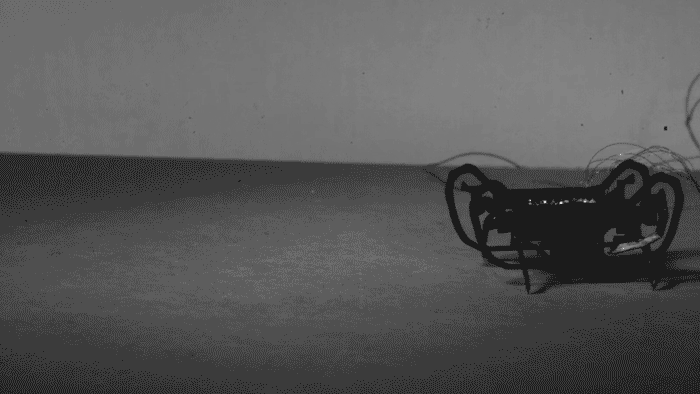Harvard shrank its insect-inspired microrobot to the size of a penny
HAMR-JR is one of the smallest and fastest microrobots to date.
Harvard researchers have made the tiny Harvard Ambulatory Microrobot (HAMR) even tinier. The next-gen, cockroach-inspired robot is about the size of a penny, and it can run at speeds of 13.9 body lengths per second. That makes it one of the smallest and fastest microrobots to date. The team also believes it’s the most dexterous robot of its size.
Dubbed HAMR-JR, the robot is a half-scale version of its predecessor, which researchers taught to swim and walk underwater. The team built HAMR-JR, in part, to test whether the origami-inspired manufacturing process used to build HAMR and other microbots, like RoboBee, could be used to build robots at multiple scales -- from tiny bots like HAMR-JR to large, industrial robots. They found that they were able to keep the design just as complex, even at the micro-scale.

“The wonderful part about this exercise is that we did not have to change anything about the previous design,” said Kaushik Jayaram, first author of the paper on HAMR-JR. “We proved that this process can be applied to basically any device at a variety of sizes.”
The researchers also wanted to see how shrinking a bot would impact its running speed and other abilities. They shrank the four-legged HAMR-JR to just 2.25 centimeters in body length -- it weighs in at about 0.3 grams. The team mimicked the movement of similarly-scaled insects, so HAMR-JR is able to trot, jump, bound and pronk. It can turn left and right, and it can trot backwards.
“Most robots at this scale are pretty simple and only demonstrate basic mobility,” Jayaram said. “We have shown that you don’t have to compromise dexterity or control for size.”
Jayaram and co-authors Samantha Castellanos, E. Farrell Helbling and Jennifer Shum presented their findings at the International Conference on Robotics Automation this week, where teams from MIT also presented work on improving soft robots’ spatial awareness and ability to grasp delicate objects.

